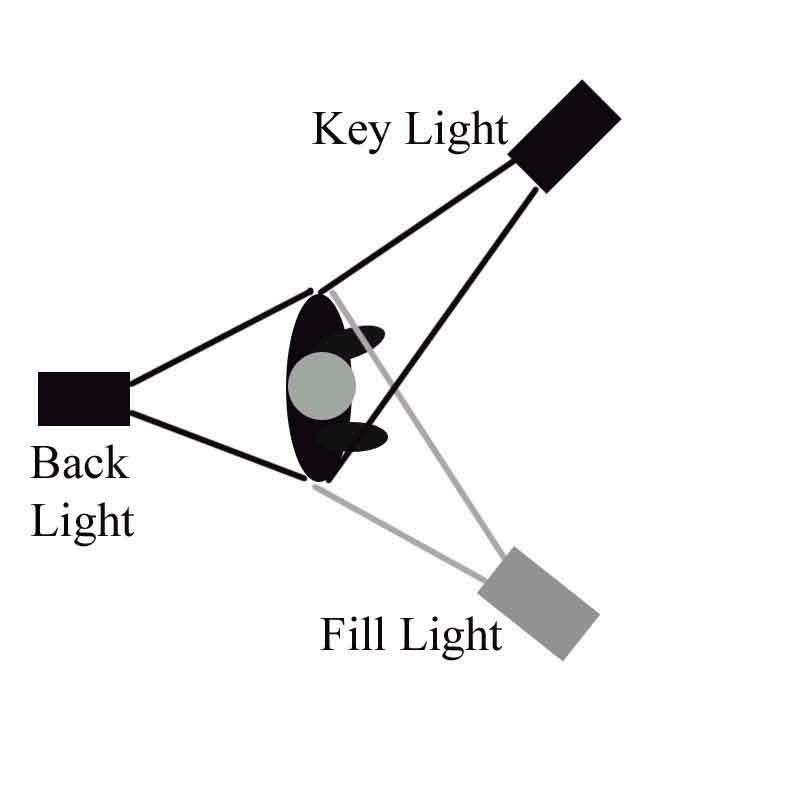|
© 2004 William David Sherman Olson Most of the lighting you see in TV and film is based on three-point lighting. Advanced filmmakers and video producers often find it limiting, but it is still the foundation of a good lighting plan. And what better place to build from than the foundation?
Since the Key light leaves harsh shadows, the Fill Light is used to soften those shadows. The fill should not be equal in strength or harshness to the Key Light. The Fill is typically a floodlight that presents a softer light. It can even be lower in intensity than the Key. The Fill side of the subject can always be recognized; it's the side that's not as brightly lit as the Key side. An advantage to having a Fill light, instead of two or more Key lights, is that some shadowing on the face helps create a more three-dimensional look. Back Lighting helps increase three-dimensionality by highlighting the edges of the subject, thus setting him/her or it from the background. For Three Point Lighting to have its greatest impact, there should be no other light sources. Now, where do you place the camera? If you subject is not going to move, and will not be looking directly into the camera, you'll have the choice of favoring the Key or Fill side. In many older film and TV productions, the camera tended to favor the Key side of the subject, but today the camera often favors the Fill side. In fact, interviews and dramas are often lit with very little if any fill light, meaning that the camera is favoring the side of the face that is very dark. I prefer this technique, but remember that if your camera is set for Auto Iris, it will probably set the exposure too bright, leaving part of the subject's face "whited out." You may have to switch the camera to Manual Iris and turn the exposure down slightly. * * *
|
|
|
|
 Three-point lighting assumes the use of three light sources (see illustration). The Key Light could be considered the prime source, the most essential light source. It is typically a spot light that casts a strong light to one side of the face. The Key and Fill Lights are usually placed at about a 45-degree angle on opposite sides of the subject.
Three-point lighting assumes the use of three light sources (see illustration). The Key Light could be considered the prime source, the most essential light source. It is typically a spot light that casts a strong light to one side of the face. The Key and Fill Lights are usually placed at about a 45-degree angle on opposite sides of the subject.
